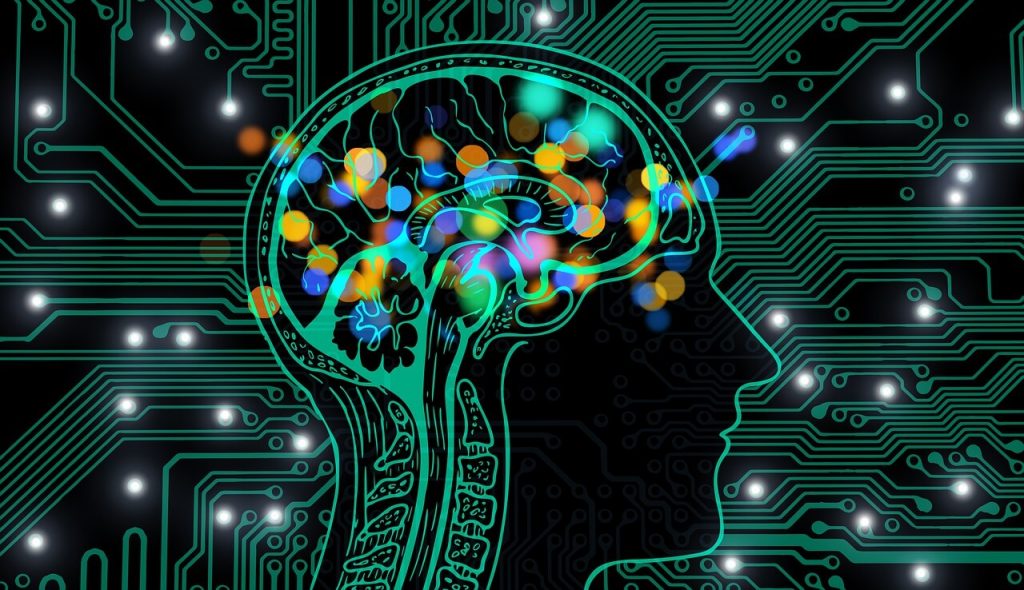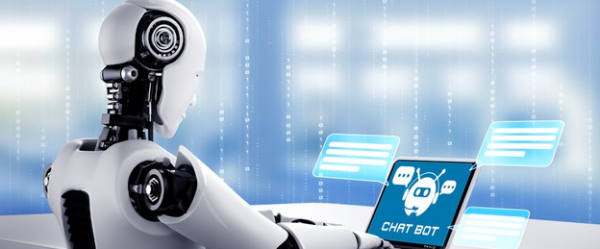The conscious, reactive, feeling, and highly intelligent machines will soon penetrate human society. For years, the mainstream media and cinema have repeatedly maintained that this quantum leap is very near. But how much? When will these machines be seen walking amid the large crowds flawlessly and effortlessly?
Perhaps, Artificial Intelligence is the most astonishing scientific discipline yet, with too many wonders unexplored. There are millions of our daily use applications that are the masterpieces of artificial intelligence services, yet they actually represent just the tip of the iceberg.
Contrary to this reality, a lot of people think we are very close to achieving the peak of AI research. People tend to believe that we will finally maximize AI potential in a couple of years, if not today. Is that true?
Whitehouse Report on Artificial Intelligence
According to this report, the speed of progress we are expecting is unreal. It claims that the dream of having artificial intelligence that can compete with human intelligence is not going to materialize in the next two decades. Machines will not exhibit broadly-applicable intelligence comparable to or exceeding that of humans, it says.
Yet it goes on to say that the machines will reach and exceed human performance on more and more tasks.
However, the main focus of the report seems to be on mainstream AI tools, which are Machine Learning, and Deep Learning. These technologies let us play some of the most complex games ever invented. Handling hefty volumes of data and performing complex calculations is no big deal for them.
But when it comes to building sentient machines we picture for the future, they lack. It requires something more than teaching a machine about how to learn. Perhaps, we need to dissolve the boundaries between different types.
Types of Artificial Intelligence
The question may arise, why bother understanding multiple types of Artificial Intelligence. A simple answer would be to satisfy the longing to know when robots walking us would be the norm.
Do you not want to check if the fear of the dystopian future makes any sense or not? The inevitable times when super-intelligent killer robots will take over our world, as science fiction narratives depict. The movies even show these evil robots wiping out the human race or at least enslaving all human race. The probability of this coming true will become easier to guess when you will get to know the basic types of Artificial Intelligence.
Thousands of concerns about Artificial Intelligence irritate every mind these days. To have a clearer picture of the capabilities of existing technology and a long road ahead of the research, understanding of the categories and types is paramount. The degree to which an AI system can replicate human capabilities serves as the criterion to identify the kind of Artificial Intelligence.
We usually distinguish one AI type from others based on the versatility and performance in comparison with the human minds of the machine that it powers. Hence AI that can perform more human-like functions with equal proficiency will be considered a more evolved type of AI. A less evolved AI type will be the one with limited functionality and performance.
Different types of AI classification make understanding easier. Based on this criterion, there are two categories.
The First Classification
It classified AI and AI-enabled machines according to their semblance with the human mind and their thinking or even feeling capabilities. According to this, there are four types of AI, and we are going to discuss them, one by one, now.
Reactive Machines
These are the most basic and most old types of AI systems. They are purely reactive and unable to form any memories or remember past experiences that influence current decisions. They do imitate the human mind when it comes to responding to different kinds of stimuli but can not decide present actions in the light of previously gained information.
In simple words, they can not learn.
IBM’s chess-playing supercomputer, Deep Blue is a perfect example of reactive machines. In the late 1990s, it won against the international grandmaster Garry Kasparov.
Deep Blue understands each piece on the chessboard and also how it moves. It predicts the next movies of itself and its opponent. Among different possibilities, it can choose the most optimal move.
Intuitively, it has no concept of the past, no memory of what happened before. It does not take into account anything that happened before, other than the rule of repeating the same move three times. However, the use of this rule is rare. Deep Blue looks at the pieces on the chessboard and chooses from the next possible moves.
This kind of intelligence is about computers perceiving the world directly and acting according to its observations. There is no reliance on the concept of the internal world.
“We should only build machines like this”, says AI researcher Rodney Brooks. He argues that people are not good at programming accurately simulated worlds that computers can use. They refer to it as a ‘representation’ of the world in AI scholarship.
The current intelligent machines that sometimes leave us astonished also have no abstract concept of the world. Some of them have a very limited and specialized one for their duties.
What made Deep Blue design successful was not to broaden the range of possibilities to consider. It was that developers found a way to narrow down its view and stop pursuing some potential future moves. Deep Blue could do so on how it rated their outcomes.
Google’s Alpha Go has also beaten human Go experts, yet it also can not evaluate all potential future moves. However, the analysis method it uses is more sophisticated than Deep Blue. It uses a neural network to evaluate game developments.
Yes, computers have outsmarted people in board games. But definitely winning board games is not all they require to gain full human capacity, let alone denounce us from our jobs.
These methods do not apply to a plethora of other situations. Beyond the specific tasks they are made for, they can do nothing at all. They have no concept of a wider world, and as a result, it is easy to fool them.
To become interactive participants in the world economy, politics, and social structure, in a way we imagine they would one day, is impossible. Thanks to science fiction movies that magnify their success.
Since these machines are predictable and behave the exact same way every time, we can conclude that Artificial Intelligence is trustworthy.
Limited Memory
Now, these are the kinds of machines that can access the past. They are also reactive machines, but with additional features of learning from history to make decisions. Self-driving vehicles have limited memory to some extent. AI also drives chatbots and virtual assistants.
Let us consider self-driving cars for a moment. They observe the speed and direction of the other vehicles. That involves identifying a scientific object and monitoring its behavior.
All these observations add up in preprogrammed representations of the world that these cars have built-in. This world also includes lane markings, traffic lights, and other essential elements, such as curves in the road. The vehicle utilizes it when it decides to change lanes or when it tries to avoid cutting off another driver or getting hit by the nearest car or other vehicles.
Now there is a limitation. All this past information is momentary. To serve as a machine’s own library of experience, and help it learn something valuable, is beyond its capacity. Unlike human drivers who can easily compile their experience over the years and jump to precious conclusions to apply in the future.
So the question is how to build AI systems that have full representations, remember their experiences, and learn to tackle new situations on their own?
Theory of Mind
While you can find examples of the previous two kinds of AI easily, the third type is a work in progress. Theory of Mind is the next level of AI systems that researchers are currently working on.
It might be plausible to stop right there and call this point a divide between machines we have and machines we will build in the future. Better would be to be more specific when it comes to types of representations machines need to form.
In this next and more advanced class, machines can form representations about not only the world but also about other agents or entities in the world. We call it Theory of Mind in psychology.
Theory of Mind is about understanding that people, creatures, and objects in the world can have thoughts and emotions that affect their behavior.
This factor is paramount to how we humans shaped societies, as they allowed us to have social interactions. Working together is impossible or at least difficult when we do not have any insight into the motives and intentions of each other. Specifically, when we do not consider what somebody else knows either about us or the environment.
AI systems must know one thing to walk on the roads with humans beings. Each of us human beings has thoughts strolling our minds and feelings and emotions going on in our hearts. We all have some expectations about how someone will treat us. They will have to adjust accordingly.
Self-awareness
And now comes the final step of AI development. To build the systems that can form representations about themselves. The ultimate goal of AI researchers is to not only understand consciousness but how to construct the machines that have it.
In essence, this is an extension of the theory of mind that the third type of artificial intelligence possesses. To refer to consciousness as self-awareness is not without any reason. Contemplate the difference between these two statements.
“I want that item.”
“I know I want that item.”
Noticed the difference? Conscious beings are aware of themselves. They know about their internal states and can predict what others are feeling with the help of the labyrinth of their own self. When we honk at others, we are angry or impatient. So if somebody else does the same, we naturally tend to assume that the person doing this is also angry or impatient. These sorts of inferences depend on the theory of mind to come into existence.
Creating the kinds of machines that are self-aware is the ultimate goal of artificial intelligence. Of course, they are decades away from materializing, if not decades. Not only would they be able to evoke emotions in others, but they would also have their feelings, beliefs, needs, and even desires of their own.
While this type of Artificial Intelligence can boost our progress as a civilization, this might be the only one that can turn Hollywood’s fiction into a grim reality. It could be a catastrophe. If AI becomes self-aware, it may also generate ideas like self-preservation. Possibly this can directly or indirectly spell the end of humanity.
The Second Classification
This alternate system of classification is more used in tech parlance.
Artificial Narrow Intelligence
This first type of the second classification of AI represents all the existing Artificial Intelligence. Even the most complex AI that has been created to the date. Artificial narrow intelligence points towards the AI systems that are capable of performing a particular task autonomously utilizing human-like capabilities. The speech and language recognition of Siri virtual assistant is a good example.
However, the machines that harbor Artificial Narrow Intelligence have a very narrow range of capacities. They cannot do anything more than what they are programmed to do.
Wondering which group of previous classification system these machines belong to? Well, they correspond to all the reactive and limited memory AI. Surprisingly, even the most complex AI that uses machine learning and deep learning to teach itself falls under the category of narrow artificial intelligence.
Please notice this is the only type of from this classification system that has successfully been realized to date.
Artificial General Intelligence
The power of an AI agent to learn, perceive, understand, and function like a human being is Artificial General Intelligence. This type of AI will imitate the multi-functional capabilities of humans by building AI systems with as much potential and talent as homo sapiens. It mimics human intelligence and behaviors.
These free-spirited machines would be able to build more than one expertise independently. It would not be any big deal for them. Also, they will have the power to form connections and generalizations across domains. Hence, they will immensely cut down on the time required for training.
Yes, this belongs to the third and fourth types of the previous classification system, as it requires conscious machines.
Artificial Superintelligence
Now, this would be the climax if the researchers successfully accomplish the mission. The development of Artificial Superintelligence will give birth to the most advanced forms of intelligence that would ever immerse the planet earth because they will outsmart human intelligence.
In addition to replicating the multi-faceted intelligence of human beings, Artificial Superintelligence will be exceptionally better at anything we humans do. Be it sports, maths, science, emotional relationships, soft skills, medicine, hobbies, or anything.
Their enormous greater memory, faster data processing and analysis, and decision-making capabilities will make them masters of all trades.
The term singularity is usually associated with the development of AGI and ASI. A singularity is an event or scenario followed by the peak development of both kinds of intelligence. No matter how fascinating it sounds to have such machines, they can turn out to be a call from our doom, or at least our modern way of life.
Conclusion
No doubt, it is a difficult subject to conclude. It is strenuous to picture the state of the world, where all these types of Artificial Intelligences will exist. However, one thing for sure is that technology is still in its one of the most primitive stages. But how much time will it take? It is tough to choose between long and short. Will the outcome be positive or negative? It is very soon to predict this and worry about the singularity.
What makes future enthralling is the fact that we have hardly hit the tip of the iceberg. In case you have a business mind, you will conclude that this is the right time to invest in the business that provides Artificial Intelligence services, as the industry is at the peak.
Scientists must focus their efforts on understanding memory, learning, and the ability to base decisions on past experiences. It would be critical in the conquest of human struggle to understand their own intelligence. How interesting it is that we have not yet explored our mind, but landed on Mars, reached the depths of oceans and peaks of the tallest world mountains.








